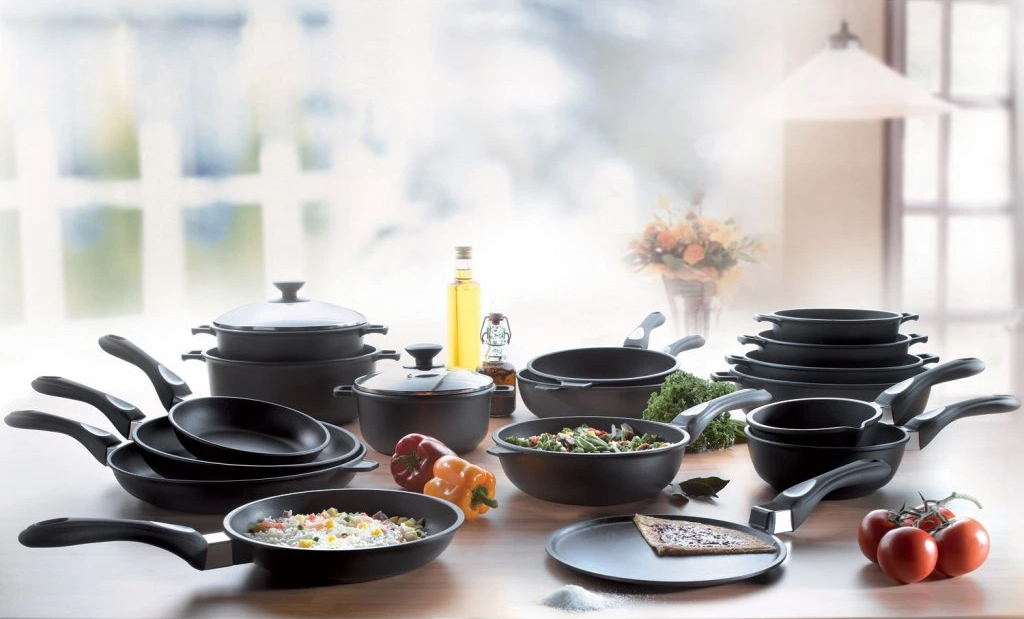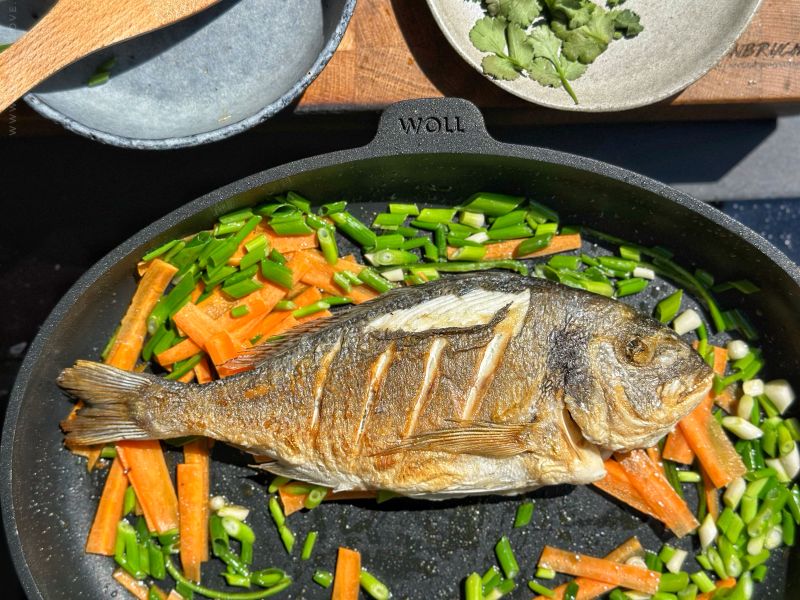Cooking without fat, without effort and without burning has its undeniable charm and for many years Teflon was synonymous with it. But what about all those articles warning about its health risks? Should we really be afraid and uncompromisingly get rid of Teflon cookware?or is the reality completely different? Let's take a look at what Teflon is really like.

Teflon was previously manufactured using perfluorooctanoic acid (PFOA), a chemical that neither the human body nor nature can break down. As a result, in 2013, most manufacturers committed to ending the use of this substance as part of the international PFOA Stewardship Program agreement, and since 2015 its use in the food industry has been banned permanently.
Modern Teflon cookware is therefore considered completely safe, and there is no need to worry about old cookware if it is used correctly - it doesn't overheat and you don't cook on it if its surface is damaged.
Keep in mind that with non-stick cookware, more than anywhere else, a bet on quality is a guarantee of safety. Reputable manufacturers guarantee that their products are free of hazardous substances and meet the strictest standards. Whereas with super-cheap cookware, where you have no way of knowing what it's made of, it's not just a shorter lifespan that's at stake, but above all your health.
Imagine discovering a material that is so smooth that nothing sticks to it. That's exactly what happened to chemist Roy Plunkett in 1938 when he accidentally created Teflon. Originally, the research was for military purposes - Teflon was supposed to protect against aggressive chemicals. But after the war, the hunt was on to find a way to use this miracle material in everyday life.
Enter Frenchman Marc Grégoire, who first applied Teflon to a pan - and voilà, the world of non-stick cookware was born! Thanks to him, frying was no longer associated with scrubbing, and cooks around the world could breathe a sigh of relief.

- Ceramic surfaceswhich are slightly less non-stick, but can withstand higher temperatures,
- Mineral surfacessuch as granite, are also less non-stick but highly durable,
- Titanium surfaceswhich combine exceptional robustness with non-stick properties and therefore a long service life.
Best non-stick pans according to customer reviews
.jpg)
Do you have old Teflon cookware at home? Then caution is in order, but not panic. As mentioned, older Teflon surfaces were probably made using PFOA, the substance that is associated with when heated to very high temperatures.carcinogenicity, endocrine and renal disorders and it is practically not removed from the body.
There is also a danger from long-term inhalation of PFOA fumes. These start to be released at 260 °C and from about 300 °C onwards can cause the so-called polymer smoke fever. It has similar symptoms to the classical flu, but unlike it, it disappears very quickly. However, the truth is that these problems are more likely to affect people who work with PFOA in industrial plants where high temperatures are quite common and the release of fumes occurs over a long period of time. In normal cooking, a Teflon pan (if you don't overheat it) heats up to about 150 °C, so there is no risk of fever from polymer fumes.
However, if you have a pet bird in your home, beware at all times, even a small concentration of PFOA vapour is fatal to it.
But most attention should be paid to damaged Teflon cookware! It is highly likely that parts of the surface are released into the food being prepared and from there into your digestive system. The latter will expel them, but who wants Teflon in their system? That's when it's a good idea to throw out the old Teflon pan and replace it with a new one that's not harmful to your health.

Best non-stick pots according to customer reviews

- Avoid overheating
Do not preheat an empty pan and always cook on medium heat. - Gentle tools
Forget metal spoons and turners - wood, plastic or silicone are the only true friends of non-stick surfaces. - Vigilance in case of damage
If you notice that the surface is scratched, the cookware must be replaced. No one wants bits of Teflon or other non-stick surfaces in their food.

- Easy handling
Non-adhesive dishes has an aluminium body inside, which makes even large pans light and easy to work with. - Easy maintenance
Food residues easily slide off the surface, so cleaning takes about as long as washing the plate. - Availability
Non-adhesive pans a pots are available in different price categories, so everyone can choose.

Final verdict
The original Teflon deserves caution, but modern non-stick cookware is made with health in mind, so you don't have to worry about it. If you're looking for a completely safe yet non-stick solution, a great choice is titanium pans if potsthat offer durability, long life and perfect cooking results.
Quality titanium pans



